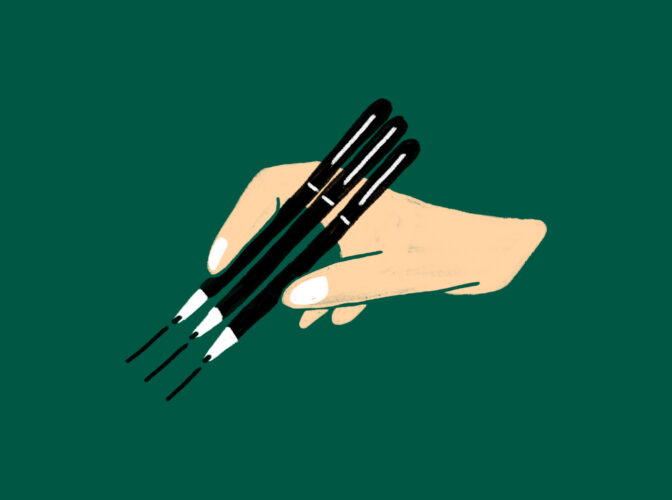A list of everything you need to include in your freelance design contract. Take on new freelance design projects with clarity, structure, and security.

Renee Fleck
Written by Renee Fleck
Published on
Last updated
A professional freelance contract makes a massive difference to your client relationships, your job satisfaction, and ultimately, your earnings—which is why we recommend that all freelance designers use a contract—whether you create your own or use a template as a starting point.
But what should a freelance design contract even include? Here are 8 must-haves you’ll want to outline in your contract.
Thanks to our friends at Bonsai for sharing their expert insights in this article!
1. Overview of the project
Kick things off with a short statement that explains what you will do for your client. There’s no need to ramble on – just include the key details of your initial freelance design proposal in the contract. Something like this will do:
“Joe McDribbble (known as “Contractor”) will provide AwesomeBrand123, (known as “Client”) with 1 new logo and 4 landing pages, as per the Terms and Conditions detailed below.”
In the overview, you could also include the start date, which should be mutually agreed upon by email or phone.
2. What, how, and when you get paid
This is often the freelancer’s favorite part of the contract! Here you’ll explain what you want from the client. It’s important to include not just what you’ll get paid, but how, when, and what happens if your client doesn’t pay. For example:
- The project fee
- Allowed payment method(s)
- Payment deadline
- Any fees associated with late or non-payment
Without a mutually accepted payment agreement, you risk playing the waiting game with clients who prefer to pay when it suits them, not when you need it. This can be devastating to a freelancer’s cash flow. Make your rate, details about deposits, milestones, retainer payments, and final deadlines crystal clear from the outset.

3. Deliverables
What will you give the client in return? Include details on:
- Individual assets (e.g. logo, banner images, etc.)
- Target delivery dates for each asset
- Milestones for larger projects
- Delivery method and file types (e.g. PNG or JPEG? PDF or Dropbox file?)
Ensure you include everything, which brings us to…
4. Project Scope
One of the biggest mistakes freelancers make with design contracts is failing to get specific with the deliverables. Suddenly, you’re dealing with “scope creep” as clients continue to add extra aspects, tasks, and revisions. Before you know it, you’re working countless hours for free.
A solid freelance contract will prevent this from happening. Use it to draw a line so your client knows what’s included, and what’s not.
It’s always a good idea to use a pre-vetted contract template for this reason. Bonsai offers these types of contracts and more, with one specifically made for freelance graphic designers.
5. Revisions and additional work
Good clients are often satisfied with a single round of revisions, but others can be picky or indecisive and may press for more.
Do yourself a favor by inserting a clause that will protect you from any client who changes the project’s core details or direction halfway through. This will limit revisions and encourage clients to be very clear about what they want upfront. For example, if the project scope is to design a logo, be sure to include a clause in the vein of:
“The Designer will develop a logo packet (with jpegs, pngs, and vector versions) for the Client. The Designer allows one round of revisions. If the Client requires more than one round of revisions or the development of other assets, it is considered beyond the “Scope of Work” and the Designer will bill an hourly rate of X/hr for any ongoing work beyond.”
This type of clause will protect the scope of your work and ensure that you’re getting compensated for the asset delivery that you and your client have agreed to.

6. Copyright & IP protections
As a creative, you need to showcase your work to grow your career, and it’s problematic when you aren’t able to claim everything you create. But here’s where your freelance graphic design contract comes in handy!
Include a section that confirms the client gives you permission to use the project in your portfolio, or for other marketing strategies that will help you win more clients.
7. Legal protections
The life of a graphic designer is enjoyable, but one bad client experience can suck the fun out of your job. Let’s say a client claims the logo you designed was so good it attracted more customers than they could handle, and now their exhausted workforce wants to sue you. With some savvy legal text, you can avoid any undue hassle from clients.
8. Termination
Sometimes, projects go south. Perhaps you can’t agree on something, or external events impact the project. If things aren’t working out, you’ll need an escape route. With a clause that specifies a notice period or termination fee, you can safeguard against a sudden disruption to your workflow or income.

A freelance design contract is the foundation of a successful project
NPR research found that 20% of jobs in the U.S. are held by contract workers, and that number will rise as the freelance revolution continues to grow. Many freelancers will make the mistake of diving into work without a design contract.
Why take the chance? By taking the time to create a freelance design contract, not only will you secure a fair deal for yourself, and your client, you’ll also look like a true professional. You’ll be more than ready to take on new projects with clarity, structure, and security. Trust us—you won’t regret it!
Ready to create a successful freelance design contract? Sign up for Bonsai to access and create professional-looking contracts that’ll help you land and keep clients.
Written by Renee Fleck
Published on
Last updated







